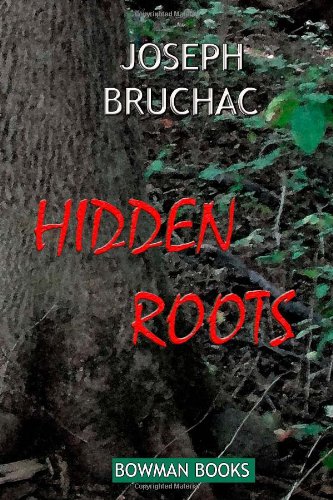Great Books for Studying Native American History: Middle School
We couldn’t fit all of our favorite Native American history books in the fall issue of the magazine, so we’re running our favorite middle and elementary school books on the HSL blog. Today, we’re highlighting some of the middle grades books we think do a great job illuminating Native American history. Add them to your U.S. History studies for a more inclusive study of the past, or use them as a jumping-off point for a study of Native Americans.
If you want a texbook-type spine for your study, the Bedford Series in History and Culture has several excellent books about Native American History, including The World Turned Upside Down: Indian Voices from Early America and Talking Back to Civilization: Indian Voices from the Progressive Era. I think these books do a great job choosing primary source documents to highlight, and middle school is exactly the right time to start dipping your toe into this kind of critical reading.
Similarly, Cavendish Square publishes the middle grades nonfiction series Peoples of North America, which captures the history and culture of different Native American tribes, including photographs, art, snapshots of daily life (in both history and modern times), and a traditional folk tale. Titles include The People and Cultures of the Apache, The People and Cultures of the Crow, The People and Cultures of the Huron, The People and Cultures of the Delaware, and The People and Cultures of the Inuit. A collection of these books makes an excellent (if not cheap) mini research library.
But I think fiction is often the most accessible way for middle grades readers to dig into history, so the majority of this list focuses on historical fiction. Joseph Bruhac has written several books about Native American history, but Hidden Roots is a particularly good pick for middle grades. In it, Sonny — a shy boy living in 1950s New York — discovers the dark side of his family’s Native American heritage, including the Native American Sterilization Program and its devastating effects on the Abenaki and Mohican people. This book is hard to read — I mean, obviously, it’s about genocide, and we have a big problem when that gets easy to read about — but it’s well done and sensitively balanced enough for most middle school readers to handle.
Similarly dark, How I Became a Ghost: A Choctaw Trail of Tears Story tackles another dark chapter in U.S. history, chronicling the forced removal of Native American tribes through the eyes of a 10-year-old boy who can see the future and knows that he —and many others — will die on the trail. That doesn’t matter so much, though, because ghosts have their own part to play in Native American life, and storytelling is part of that. The book is written by an Oklahoma Choctaw storyteller, and it’s heavily based on the stories of actual Choctaw people.
In the free verse novel Who Will Tell My Brother?, a part-Native American high school senior who has just begun to connect with his Native American roots, goes to battle against his school’s racist mascot. (Think the Washington Redskins or the Atlanta Braves.) It’s a quiet, powerful book that illuminates why it’s worth “making a fuss” about words we use and mascots we choose.
Indian Shoes reads like a series of glimpses into contemporary Native American life. In this collection of interrelated short stories (they read almost like vignettes), Ray — a half-Seminole, half-Cherokee boy who lives with his Grampa Halfmoon in Chicago.
Half-Lakota Jimmy McLean is the official protagonist of In the Footsteps of Crazy Horse, but Tasunke Witko (a.k.a. “Crazy Horse”) is the real hero of the book. Author Joseph Marshall (also a Lakota) paints him as a larger-than-life hero, a Luke Skywalker poised against the Galactic Empire of the United States. It’s an amazing story about a man who fought to protect his people and his culture from the encroaching United States. Crazy Horse’s story becomes a touchstone for Jimmy, who is struggling with being not-quite-Lakota and not-quite-standard-Caucasian.
Sherman Alexie is pretty much required reading for modern-day Native American studies, and his The Absolutely True Diary of a Part-Time Indian is already a classic. Junior wants to be a cartoonist, so he takes his learning into his own hands and enrolls in the town high school instead of the school on the Spokane Indian Reservation where he’s always gone. His new school comes with a big learning curve (and an Indian mascot), and the story is as much about the problematic experiences of modern-day Native American kids — where do they fit in? — as on Junior’s Everyteen experiences figuring out who he really is. An excellent book for more mature middle schoolers, though you may want to make sure it’s a good match for your particular kid.
The Trickster figure appears in many Native American tales, and the graphic novel Trickster: Native American Tales puts this mischief-making character front and center. Because it tries to include tales from across the continent, the collection feels a little mishmash-y, and some readers were put off by the simplicity of the tales and lack of sophistication in the artwork. Fair enough. But it’s a solid collection of stories from different tribes about the many manifestations of the Trickster, and I think a lot of middle schoolers would enjoy it.
Just for fun, check out the comic Super Indian, about a totally ordinary Reservation boy who develops superpowers after eating tainted government cheese. There are plenty of sly pokes at Native American stereotypes that kids will have fun pointing out.
Bonus: We Shall Remain isn’t a book, but this American Experience series (it includes five 90-minute episodes) is a fascinating look at three hundred years of U.S. history from the perspective of Native American peoples, from 1600s New England to the Civil Rights movement of the 20th century.









